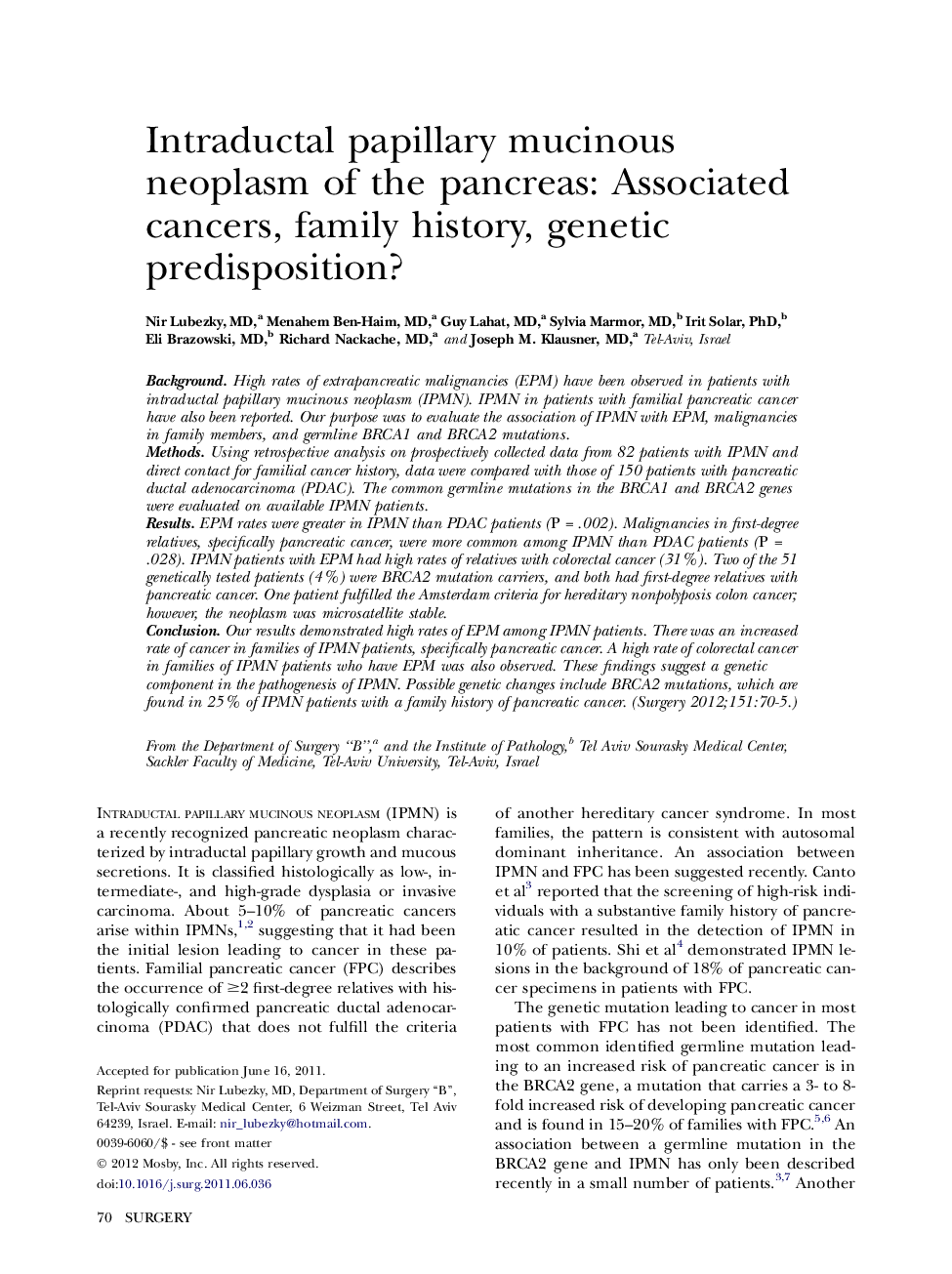| Article ID | Journal | Published Year | Pages | File Type |
|---|---|---|---|---|
| 4308644 | Surgery | 2012 | 6 Pages |
BackgroundHigh rates of extrapancreatic malignancies (EPM) have been observed in patients with intraductal papillary mucinous neoplasm (IPMN). IPMN in patients with familial pancreatic cancer have also been reported. Our purpose was to evaluate the association of IPMN with EPM, malignancies in family members, and germline BRCA1 and BRCA2 mutations.MethodsUsing retrospective analysis on prospectively collected data from 82 patients with IPMN and direct contact for familial cancer history, data were compared with those of 150 patients with pancreatic ductal adenocarcinoma (PDAC). The common germline mutations in the BRCA1 and BRCA2 genes were evaluated on available IPMN patients.ResultsEPM rates were greater in IPMN than PDAC patients (P = .002). Malignancies in first-degree relatives, specifically pancreatic cancer, were more common among IPMN than PDAC patients (P = .028). IPMN patients with EPM had high rates of relatives with colorectal cancer (31%). Two of the 51 genetically tested patients (4%) were BRCA2 mutation carriers, and both had first-degree relatives with pancreatic cancer. One patient fulfilled the Amsterdam criteria for hereditary nonpolyposis colon cancer; however, the neoplasm was microsatellite stable.ConclusionOur results demonstrated high rates of EPM among IPMN patients. There was an increased rate of cancer in families of IPMN patients, specifically pancreatic cancer. A high rate of colorectal cancer in families of IPMN patients who have EPM was also observed. These findings suggest a genetic component in the pathogenesis of IPMN. Possible genetic changes include BRCA2 mutations, which are found in 25% of IPMN patients with a family history of pancreatic cancer.
